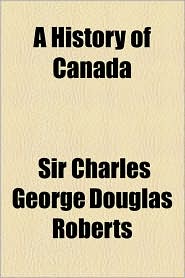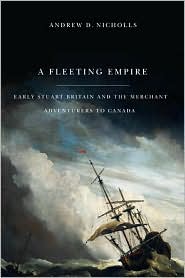The History of Canada
The history of Canada begins with the arrival of Paleo-Indians thousands of years ago. Canada has been inhabited for millennia by Aboriginal peoples, who evolved trade, spiritual and social hierarchies systems. Some of these civilisations had long faded by the time of the first permanent European arrivals (c. late 15th - early 16th centuries), and have been discovered through archaeological investigations. Various laws, treaties, and legislation have been enacted between European settlers and the Indigenous populations.
Beginning in the late 15th century, French and British expeditions explored, and later settled, along the Atlantic coast. France ceded nearly all of its colonies in North America in 1763 after the Seven Years' War. In 1867, with the union of three British North American colonies through Confederation, Canada was formed as a federal dominion of four provinces. This began an accretion of provinces and territories and a process of increasing autonomy from the United Kingdom. This widening autonomy was highlighted by the Statute of Westminster of 1931 and culminated in the Canada Act of 1982, which severed the vestiges of legal dependence on the British parliament.
Over centuries, elements of Aboriginal traditions and immigrant customs have integrated to form a Canadian culture. Canada has also been strongly influenced by that of its linguistic, geographic and economic neighbour, the United States. Since the conclusion of the Second World War, Canada has been committed to multilateralism abroad and socioeconomic development domestically. Canada currently consists of ten provinces and three territories, and is governed as a parliamentary democracy and a constitutional monarchy with Queen Elizabeth II as its head of state.
The history of immigration to Canada extends back thousands of years. Anthropologists continue to argue over various possible models of migration to modern day Canada, as well as their pre-contact populations. The Inuit are believed to have arrived entirely separately from other indigenous peoples around 1200 CE. Indigenous peoples contributed significantly to the culture and economy of the early European colonies and as such have played an important role in fostering a unique Canadian cultural identity.
Statistics Canada has tabulated the effect of immigration on population growth in Canada from 1851 to 2001. On average censuses are taken every 10 years, which is how Canadian censuses were first incremented between 1871 and 1901. Beginning in 1901, the Dominion Government changed its policy so that census-taking occurred every 5 years subsequently. This was to document the effects of the advertising campaign initiated by Clifford Sifton.
In 2006, Canada received 236,756 immigrants. The top ten sending countries, by state of origin, were People's Republic of China (28,896), India (28,520), Philippines (19,718), Pakistan (9,808), United States (8,750), United Kingdom (7,324), Iran (7,195), South Korea (5,909), Colombia (5,382), and Sri Lanka (4,068). The top ten source countries were followed closely by France (4,026), and Morocco (4,025), with Romania, Russia, and Algeria. each contributing over 3,500 immigrants.
The Oka Crisis was a land dispute between the Mohawk nation and the town of Oka, Quebec, Canada which began on July 11, 1990. It lasted until September 26, 1990. One person died as a result. The dispute was the first of a number of well-publicized conflicts between First Nations and the Canadian government in the late 20th century which were associated with violence.
The crisis developed from a local dispute between the town of Oka and the Mohawk community of Kanesatake. The town of Oka was developing plans to expand a golf course and residential development onto the land which had traditionally been used by the Mohawk. It included pineland and a burial ground, marked by standing tombstones of their ancestors. The Mohawk nation had filed a land claim for the sacred grove and burial ground near Kanesatake, but their claim had been rejected in 1986.
The Oka Crisis was extensively documented and inspired numerous books and films. Canadian filmmaker Alanis Obomsawin has made documentaries about the Oka Crisis, including Kanehsatake: 270 Years of Resistance (1993) and Rocks at Whiskey Trench (2000). These and two additional documentaries on the crisis were all produced by the National Film Board of Canada: Christine Welsh directed Keepers of the Fire (1994), which documented the role of Mohawk women during the crisis, and Alex MacLeod created Acts of Defiance (1993).
Some useful books>>>>






 Data Science Ar
Data Science Ar
0 comments:
Post a Comment